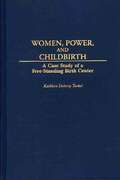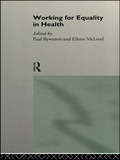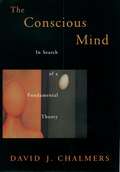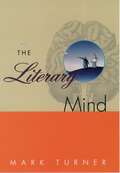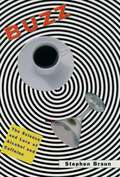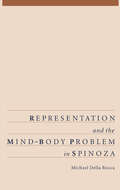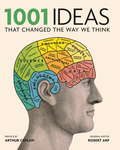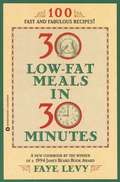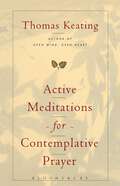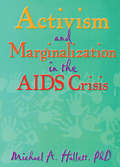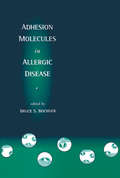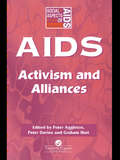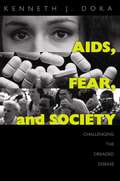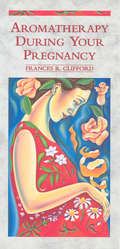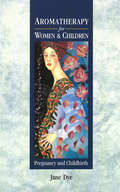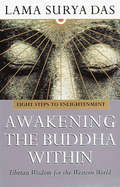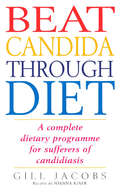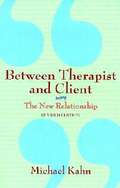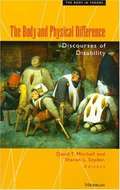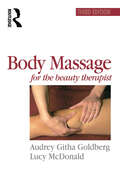- Table View
- List View
Women, Power, and Childbirth: A Case Study of a Free-Standing Birth Center (Non-ser.)
by Kathleen D. TurkelBased on her 12 year study of a free-standing birth center, Turkel analyzes the medical model of childbirth in contrast to the midwifery model. In the medical model of birth, women are defined as patients and birth takes place in hospitals where women have little, if any, control over their experience. The midwifery model views birth as a healthy process where midwives act as teachers and guides for women during pregnancy and birth, helping women and their families to shape and define their experience to meet their needs and expectations. Under existing legal and cultural circumstances, free-standing birth centers face a dilemma. They must continually accomodate the medical model while trying to maintain the midwifery model and give women an option to home birth or to hospital birth.
Working for Equality in Health
by Paul Bywaters Eileen McLeodUnequal social relations are reflected in uneven patterns of health within and between populations. In Working for Equality in Health, health workers and academics distil the results of their efforts to understand, oppose and change health inequalities. Working for Equality in Health brings to bear the understanding of a unique combination of practitioners and activists on a key issue for health experience, policy and practice. Common themes and common obstacles become apparent: the need for ever better understandings of the interactive effects of social disadvantage; the damage wrought to people's health by inegalitarian economic, social and health policies and the benefits of alliances between health professionals and other health workers to combat social and health inequalities.
Working for Equality in Health
by Paul Bywaters Eileen McLeodUnequal social relations are reflected in uneven patterns of health within and between populations. In Working for Equality in Health, health workers and academics distil the results of their efforts to understand, oppose and change health inequalities. Working for Equality in Health brings to bear the understanding of a unique combination of practitioners and activists on a key issue for health experience, policy and practice. Common themes and common obstacles become apparent: the need for ever better understandings of the interactive effects of social disadvantage; the damage wrought to people's health by inegalitarian economic, social and health policies and the benefits of alliances between health professionals and other health workers to combat social and health inequalities.
The Conscious Mind: In Search of a Fundamental Theory (Philosophy of Mind)
by David J. ChalmersWhat is consciousness? How do physical processes in the brain give rise to the self-aware mind and to feelings as profoundly varied as love or hate, aesthetic pleasure or spiritual yearning? These questions today are among the most hotly debated issues among scientists and philosophers, and we have seen in recent years superb volumes by such eminent figures as Francis Crick, Daniel C. Dennett, Gerald Edelman, and Roger Penrose, all firing volleys in what has come to be called the consciousness wars. Now, in The Conscious Mind, philosopher David J. Chalmers offers a cogent analysis of this heated debate as he unveils a major new theory of consciousness, one that rejects the prevailing reductionist trend of science, while offering provocative insights into the relationship between mind and brain. Writing in a rigorous, thought-provoking style, the author takes us on a far-reaching tour through the philosophical ramifications of consciousness. Chalmers convincingly reveals how contemporary cognitive science and neurobiology have failed to explain how and why mental events emerge from physiological occurrences in the brain. He proposes instead that conscious experience must be understood in an entirely new light--as an irreducible entity (similar to such physical properties as time, mass, and space) that exists at a fundamental level and cannot be understood as the sum of its parts. And after suggesting some intriguing possibilities about the structure and laws of conscious experience, he details how his unique reinterpretation of the mind could be the focus of a new science. Throughout the book, Chalmers provides fascinating thought experiments that trenchantly illustrate his ideas. For example, in exploring the notion that consciousness could be experienced by machines as well as humans, Chalmers asks us to imagine a thinking brain in which neurons are slowly replaced by silicon chips that precisely duplicate their functions--as the neurons are replaced, will consciousness gradually fade away? The book also features thoughtful discussions of how the author's theories might be practically applied to subjects as diverse as artificial intelligence and the interpretation of quantum mechanics. All of us have pondered the nature and meaning of consciousness. Engaging and penetrating, The Conscious Mind adds a fresh new perspective to the subject that is sure to spark debate about our understanding of the mind for years to come.
The Literary Mind: The Origins of Thought and Language
by Mark TurnerWe usually consider literary thinking to be peripheral and dispensable, an activity for specialists: poets, prophets, lunatics, and babysitters. Certainly we do not think it is the basis of the mind. We think of stories and parables from Aesop's Fables or The Thousand and One Nights, for example, as exotic tales set in strange lands, with spectacular images, talking animals, and fantastic plots--wonderful entertainments, often insightful, but well removed from logic and science, and entirely foreign to the world of everyday thought. But Mark Turner argues that this common wisdom is wrong. The literary mind--the mind of stories and parables--is not peripheral but basic to thought. Story is the central principle of our experience and knowledge. Parable--the projection of story to give meaning to new encounters--is the indispensable tool of everyday reason. Literary thought makes everyday thought possible. This book makes the revolutionary claim that the basic issue for cognitive science is the nature of literary thinking. In The Literary Mind, Turner ranges from the tools of modern linguistics, to the recent work of neuroscientists such as Antonio Damasio and Gerald Edelman, to literary masterpieces by Homer, Dante, Shakespeare, and Proust, as he explains how story and projection--and their powerful combination in parable--are fundamental to everyday thought. In simple and traditional English, he reveals how we use parable to understand space and time, to grasp what it means to be located in space and time, and to conceive of ourselves, other selves, other lives, and other viewpoints. He explains the role of parable in reasoning, in categorizing, and in solving problems. He develops a powerful model of conceptual construction and, in a far-reaching final chapter, extends it to a new conception of the origin of language that contradicts proposals by such thinkers as Noam Chomsky and Steven Pinker. Turner argues that story, projection, and parable precede grammar, that language follows from these mental capacities as a consequence. Language, he concludes, is the child of the literary mind. Offering major revisions to our understanding of thought, conceptual activity, and the origin and nature of language, The Literary Mind presents a unified theory of central problems in cognitive science, linguistics, neuroscience, psychology, and philosophy. It gives new and unexpected answers to classic questions about knowledge, creativity, understanding, reason, and invention.
Buzz: The Science and Lore of Alcohol and Caffeine
by Stephen BraunAlcohol and caffeine are deeply woven into the fabric of life for most of the world's population, as close and as comfortable as a cup of coffee or a can of beer. Yet for most people they remain as mysterious and unpredictable as the spirits they were once thought to be. Now, in Buzz, Stephen Braun takes us on a myth-shattering tour of these two popular substances, one that blends fascinating science with colorful lore, and that includes cameo appearances by Shakespeare and Balzac, Buddhist monks and Arabian goat herders, even Mikhail Gorbachev and David Letterman (who once quipped, "If it weren't for the coffee, I'd have no identifiable personality whatsoever"). Much of what Braun reveals directly contradicts conventional wisdom about alcohol and caffeine. Braun shows, for instance, that alcohol is not simply a depressant as popularly believed, but is instead "a pharmacy in a bottle"--mimicking the action of drugs such as cocaine, amphetamine, valium, and opium. At low doses, it increases electrical activity in the same brain systems affected by stimulants, influences the same circuits targeted by valium, and causes the release of morphine-like compounds known as endorphins--all at the same time. This explains why alcohol can produce a range of reactions, from boisterous euphoria to dark, brooding hopelessness. Braun also shatters the myth that alcohol kills brain cells, reveals why wood alcohol or methanol causes blindness, and explains the biological reason behind the one-drink-per-hour sobriety rule (that's how long it takes the liver, working full tilt, to disable the 200 quintillion ethanol molecules found in a typical drink). The author then turns to caffeine and shows it to be no less remarkable. We discover that more than 100 plant species produce caffeine molecules in their seeds, leaves, or bark, a truly amazing distribution throughout nature (nicotine, in comparison, is found only in tobacco; opium only in the poppy). It's not surprising then that caffeine is far and away the most widely used mind altering substance on the planet, found in tea, coffee, cocoa, chocolate, soft drinks, and more than 2,000 non-prescription drugs. (Tea is the most popular drink on earth, with coffee a close second.) Braun also explores the role of caffeine in creativity: Johann Sebastian Bach, for one, loved coffee so much he wrote a Coffee Cantata (as Braun notes, no music captures the caffeinated experience better than one of Bachs frenetic fugues), Balzac would work for 12 hours non-stop, drinking coffee all the while, and Kant, Rousseau, and Voltaire all loved coffee. And throughout the book, Braun takes us on many engaging factual sidetrips--we learn, for instance, that Theodore Roosevelt coined the phrase "Good to the last drop" used by Maxwell House ever since; that distances between Tibetan villages are sometimes reckoned by the number of cups of tea needed to sustain a person (three cups being roughly 8 kilometers); and that John Pemberton's original recipe for Coca-Cola included not only kola extract, but also cocaine. Whether you are a sophisticated consumer of cabernet sauvignon and Kenya AA or just someone who needs a cup of joe in the morning and a cold one after work, you will find Buzz to be an eye-opening, informative, and often amusing look at two substances at once utterly familiar and deeply mysterious.
Representation and the Mind-Body Problem in Spinoza
by Michael Della RoccaThis first extensive study of Spinoza's philosophy of mind concentrates on two problems crucial to the philosopher's thoughts on the matter: the requirements for having a thought about a particular object, and the problem of the mind's relation to the body. Della Rocca contends that Spinoza's positions are systematically connected with each other and with a principle at the heart of his metaphysical system: his denial of causal or explanatory relations between the mental and the physical. In this way, Della Rocca's exploration of these two problems provides a new and illuminating perspective on Spinoza's philosophy as a system.
1001 Ideas that Changed the Way We Think (1001)
by Robert ArpAn awe-inspiring overview of the development of human knowledge over the centuries!Part of the highly successful '1001' series which have sold over a million copies in the UK alone 1001 Ideas That Changed The Way We Think offers not only a comprehensive history of ideas, but also an eminently browsable source of amusement.This richly informative and entertaining book provides a wide variety of answers to those eternal questions such as...How was the universe created and what is the place of humans within it? How should a person live? And how can we build a just society?Readers will discover how the Greek philosopher Zeno 'proved' a flying arrow never moves and the mathematical proof of the existence of life in other galaxies. The inspiring ideas explored range from Gandhi's theory of civil disobedience to Mary Wollstonecraft's groundbreaking advocacy of women's rights. A wide variety of cultural movements are also covered, including Neoclassicism, Surrealism and Postmodernism.Drawing of a wide spectrum of topics including politics, cosmology, the arts, philosophy and religious beliefs, 1001 Ideas That Changed The Way We Thinktraces the exponential growth of human knowledge across the centuries. Ranging from the ancient wisdom of Confucius and Plato, to the cutting-edge theories taking shape in the twenty-first century, this book offers a wealth of stimulation and wit for any reader with a lively and curious mind.
30 Low-Fat Meals in 30 Minutes
by Faye LevyThis book will prove that you can prepare quick meals that are low in fat and still taste great. The recipes will make use of bold seasonings that instantly add flavor without the need for long simmering. The book is organized around main courses, with chapters broken down into menus with poultry or meat, menus with fish or seafood, vegetarian menus and pasta menus. In addition, an introductory chapter will offer strategies for quick, low-fat cooking, including tips on picking fresh ingredients, stocking a pantry and cooking techniques. The menus will follow today's flexible dining habits. Some menus serve two, and others serve four. Most menus will include three recipes, but they will not all follow the traditional pattern of appetizer, main course and dessert. Sometimes, for example, there will be a main course with two accompaniments. Those menus that do not include desserts will have suggestions for simple desserts (usually seasonal fruit, frozen yogurt or other desserts already in the book) that would complement the menu well.
Active Meditations for Contemplative Prayer
by Thomas KeatingThomas Keating was a Cistercian monk who founded the worldwide 'Contemplative Outreach', teaching people the art of meditation. This is a compilation of quotes from his books, to be perused in times of peace as well as crisis. His distinct voice offers solace and wise teaching on the method of Centering Prayer and how it can affect one's daily life. An inspiration and a guide for busy people, who wish to find a moment in their hectic days to reflect in peaceful prayer.
Activism and Marginalization in the AIDS Crisis
by Michael A HallettActivism and Marginalization in the AIDS Crisis shows readers how the advent of HIV-disease has brought into question the utility of certain forms of “activism” as they relate to understanding and fighting the social impacts of disease. This informative and powerful book is centrally concerned about the ways in which institutionally governed social constructions of HIV/AIDS affect policy and public images of the disease more so than activist efforts. It asserts that an accounting of the power institutional structures have over the dominant social constructions of HIV disease is fundamental to adequate forms of present and future AIDS activism. Chapters in Activism and Marginalization in the AIDS Crisis demonstrate how, despite what is thought of as the “successful activism” of the past decade, the claims of the HIV-positive are still being ignored, still being marginalized, and still being administratively “handled” and exploited even as the plight of those who find themselves HIV-positive worsens. Although chapters reject the assertion that activism has been a highly effective remedy to HIV-positive voicelessness, authors do not deny that activists have been vocal, but that they continue to be ignored despite their vocality.Contributors in Activism and Marginalization in the AIDS Crisis offer numerous examples of institutional control and demonstrate that institutional structures, and not activists, are controlling the public meaning of HIV-related issues. Readers learn how messages about HIV/AIDS are produced, negotiated, modified, and sustained through institutional mechanisms that serve mostly institutional interests rather than those of the HIV-positive. In gaining an understanding of these issues, readers will begin to learn how to modify and strengthen activist efforts with valuable insight on: the lack of HIV-positive voices in mainstream news portrayals of HIV/AIDS research on constructions of HIV-disease at the state government level social constructions and how they affect HIV/AIDS policy the political construction of AIDS and interest-based struggles the emergent “bio-politics” of HIV and homosexuality in the U.S. how institutional power works to govern public understanding of HIV diseaseInstitutional structures are defined in this book as groups engaged in and defined by the production of various “truths” which sustain them. Institutional power may be defined as the capacity to regulate, constrain, and disseminate versions of “truth.” Activism and Marginalization in the AIDS Crisis reveals how HIV activist groups have been outmaneuvered when it comes to the production and dissemination of various “truths” about HIV/AIDS by institutional structures more deeply steeped in social legitimacy and which have a superior capacity for message dissemination.HIV/AIDS activists, HIV-positive persons and those with AIDS, HIV/AIDS educators, public and institutional policymakers, health professionals, and the general public will find this book essential to understanding the social constructions of HIV/AIDS, how these affect HIV/AIDS-related policy and public opinion, and how to begin to cipher through the plethora of information to find and promote the “truth.”
Activism and Marginalization in the AIDS Crisis
by Michael A HallettActivism and Marginalization in the AIDS Crisis shows readers how the advent of HIV-disease has brought into question the utility of certain forms of “activism” as they relate to understanding and fighting the social impacts of disease. This informative and powerful book is centrally concerned about the ways in which institutionally governed social constructions of HIV/AIDS affect policy and public images of the disease more so than activist efforts. It asserts that an accounting of the power institutional structures have over the dominant social constructions of HIV disease is fundamental to adequate forms of present and future AIDS activism. Chapters in Activism and Marginalization in the AIDS Crisis demonstrate how, despite what is thought of as the “successful activism” of the past decade, the claims of the HIV-positive are still being ignored, still being marginalized, and still being administratively “handled” and exploited even as the plight of those who find themselves HIV-positive worsens. Although chapters reject the assertion that activism has been a highly effective remedy to HIV-positive voicelessness, authors do not deny that activists have been vocal, but that they continue to be ignored despite their vocality.Contributors in Activism and Marginalization in the AIDS Crisis offer numerous examples of institutional control and demonstrate that institutional structures, and not activists, are controlling the public meaning of HIV-related issues. Readers learn how messages about HIV/AIDS are produced, negotiated, modified, and sustained through institutional mechanisms that serve mostly institutional interests rather than those of the HIV-positive. In gaining an understanding of these issues, readers will begin to learn how to modify and strengthen activist efforts with valuable insight on: the lack of HIV-positive voices in mainstream news portrayals of HIV/AIDS research on constructions of HIV-disease at the state government level social constructions and how they affect HIV/AIDS policy the political construction of AIDS and interest-based struggles the emergent “bio-politics” of HIV and homosexuality in the U.S. how institutional power works to govern public understanding of HIV diseaseInstitutional structures are defined in this book as groups engaged in and defined by the production of various “truths” which sustain them. Institutional power may be defined as the capacity to regulate, constrain, and disseminate versions of “truth.” Activism and Marginalization in the AIDS Crisis reveals how HIV activist groups have been outmaneuvered when it comes to the production and dissemination of various “truths” about HIV/AIDS by institutional structures more deeply steeped in social legitimacy and which have a superior capacity for message dissemination.HIV/AIDS activists, HIV-positive persons and those with AIDS, HIV/AIDS educators, public and institutional policymakers, health professionals, and the general public will find this book essential to understanding the social constructions of HIV/AIDS, how these affect HIV/AIDS-related policy and public opinion, and how to begin to cipher through the plethora of information to find and promote the “truth.”
Adhesion Molecules in Allergic Disease
by Bruce S. BochnerThis unique resource-the first book of its kind exclusively devoted to the subject-offers timely coverage of the cells, mechanisms, and proteins involved in allergic inflammation, emphasizing the latest advances in local cell recruitment.
Adhesion Molecules in Allergic Disease
by Bruce S. BochnerThis unique resource-the first book of its kind exclusively devoted to the subject-offers timely coverage of the cells, mechanisms, and proteins involved in allergic inflammation, emphasizing the latest advances in local cell recruitment.
AIDS: Activism And Alliances (Social Aspects of AIDS)
by Peter Aggleton Peter Davies Graham HartFrom the start of the AIDS epidemic there have been calls for greater solidarity between affected groups and communities, and public health services. This can be seen both in the move towards healthy alliances in health service work, and in the demands of AIDS activists worldwide. This text brings together specially selected papers addressing these and related themes given at the Eighth Conference on Social Aspects of AIDS held in London in late 1995. Among the issues examined are profession and policy; the heightened vulnerability of groups such as women and younger gay men; and issues of drug use, disability and HIV prevention.
AIDS: Activism and Alliances (Social Aspects of AIDS)
by Peter Aggleton Peter Davis Graham HartFrom the start of the AIDS epidemic there have been calls for greater solidarity between affected groups and communities, and public health services. This can be seen both in the move towards healthy alliances in health service work, and in the demands of AIDS activists worldwide. This text brings together specially selected papers addressing these and related themes given at the Eighth Conference on Social Aspects of AIDS held in London in late 1995. Among the issues examined are profession and policy; the heightened vulnerability of groups such as women and younger gay men; and issues of drug use, disability and HIV prevention.
AIDS, Fear and Society: Challenging the Dreaded Disease (Death Education, Aging and Health Care)
by Kenneth J. DokaFirst Published in 1997. Routledge is an imprint of Taylor & Francis, an informa company.
AIDS, Fear and Society: Challenging the Dreaded Disease (Death Education, Aging and Health Care)
by Kenneth J. DokaFirst Published in 1997. Routledge is an imprint of Taylor & Francis, an informa company.
Aromatherapy During Your Pregnancy
by Frances R CliffordThis book charts the aromatic pathway from the pre-conceptual stage right through to delivery and ne-natal care. It is a must for any health-conscious couple contemplating starting a family and wishing to enhance their lifestyle with essential oils and other naturally energetic products.The author has been in practice as an aromatherapist since the early 1980's, having previously founded the Bodytreats Group with her husband. Together, they have spearheaded a new approach to the understanding of the innermost secrets of essential oils, thus affecting the rationales which govern their use in clinical practice. Most of her time is spent with patients in Harley Street, London, teaching worldwide, lecturing and writing. She specializes in the treatment of cellulite, stress-related illnesses and the care of parents-to-be and their families.
Aromatherapy For Women & Children: Pregnancy and Childbirth
by Jane DyeAromatherapy For Women & Children is an invaluable aid for all women interested in the practise and theory of aromatherapy and how it can influence their everyday life and those of their families. It combines a comprehensive guide to the therapy with an easily accessible alphabetical section on understanding the oils, along with an A-Z directory covering all the common ailments.As Jane Dye explains, aromatherapy can have profound influence on the mental, emotional and physical levels and, if used with a degree of knowledge and respect, can effectively and delightfully treat all manner of complaints in a safe, non-toxic, non-habit forming way. She makes it assessible for everyone of all ages, especially beneficial during pregnancy and for children, when ideally, chemical drugs and their sometimes side effects should be avoided.
Awakening The Buddha Within: Eight Steps To Enlightenment
by Surya DasIn this comprehensive book, Lama Surya Das provides a bridge between East and West, past, present and future, making sacred and profound Tibetan teachings clear and easily accessible for anyone who wants to lead a more enlightened and sane life.Utilizing the unique Buddhist guidelines embodied in the Noble Eight Fold Path and the traditional Three Enlightenment Trainings of Virtue, Meditation and Wisdom, he elucidates the tried and true path of spiritual transformation - including key principles such as karma, rebirth and mind-training, as well as the highest, most secret teaching of Tibet, Dzogchen. In this wonderful marriage of the practical and the profound, Lama Surya Das reveals how sacred wisdom can be integrated into our busy lives. He offers a unique approach to the comprehensive wisdom of ancient Tibetan teachings on conscious living and dying and shows that the power of the Buddha is resting within us all. Drawing on Buddhist spirituality and wisdom, this is a view of the world written for Western seekers.
Beat Candida Through Diet: A Complete Dietary Programme for Suffers of Candidiasis
by Gill Jacobs Joanna KjaerLargely dismissed by the medical profession, the increasing incidence of candida-related health problems has been called 'the silent epidemic'. All of us have the yeast organism candida albicans in our bodies. It is only when the production of candida gets out of control that there are problems - recurrent thrush, chronic fatigue, mood swings, headaches, indecisiveness, memory loss, insomnia, muscle ache, abdominal pain, constipation, loss of sexual desire - are just a few of the common symptoms that indicate that candida overgrowth may be present in the body. Identifying trigger foods is the key to combating the problem. But where do you start? This book includes a complete Candida Maintenance Programme and features delicious and easy recipes from leading cookery writer Michelle Berriedale-Johnson.
Between Therapist and Client: The New Relationship (PDF)
by Michael KahnIn "Between Therapist and Client, " Michael Kahn explores what is perhaps the most important aspect of therapy - the therapist-client relationship. As he traces the history of the clinical relationship from Freud to the present, Kahn shows how the enmity between the humanists and the psychoanalysts limited their therapeutic effectiveness - and how their recent reconciliation has opened up exciting new possibilities for the way therapists relate to clients, pointing to a promising new period in the history of psychotherapy.
The Body And Physical Difference: Discourses Of Disability
by David T. Mitchell Sharon L. SnyderFor years the subject of human disability has engaged those in the biological, social and cognitive sciences, while at the same time, it has been curiously neglected within the humanities. The Body and Physical Difference seeks to introduce the field of disability studies into the humanities by exploring the fantasies and fictions that have crystallized around conceptions of physical and cognitive difference. Based on the premise that the significance of disabilities in culture and the arts has been culturally vexed as well as historically erased, the collection probes our society's pathological investment in human variability and "aberrancy. " The contributors demonstrate how definitions of disability underpin fundamental concepts such as normalcy, health, bodily integrity, individuality, citizenship, and morality--all terms that define the very essence of what it means to be human. The book provides a provocative range of topics and perspectives: the absence of physical "otherness" in Ancient Greece, the depiction of the female invalid in Victorian literature, the production of tragic innocence in British and American telethons, the reconstruction of Civil War amputees, and disability as the aesthetic basis for definitions of expendable life within the modern eugenics movement. With this new, secure anchoring in the humanities, disability studies now emerges as a significant strain in contemporary theories of identity and social marginality. Moving beyond the oversimplication that disabled people are marginalized and made invisible by able-ist assumptions and practices, the contributors demonstrate that representation is founded upon the perpetual exhibition of human anomalies. In this sense, all art can be said to migrate toward the "freakish" and the "grotesque. " Such a project paradoxically makes disability the exception and the rule of the desire to represent that which has been traditionally out-of-bounds in polite discourse. The Body and Physical Difference has relevance across a wide range of academic specialties such as cultural studies, the sociology of medicine, history, literature and medicine, the allied health professions, rehabilitation, aesthetics, philosophical discourses of the body, literary and film studies, and narrative theory. David T. Mitchell is Assistant Professor of English, Northern Michigan University. Sharon L. Snyder teaches film and literature at Northern Michigan University.
Body Massage for the Beauty Therapist
by Audrey Goldberg Lucy McdonaldThe beauty therapist, increasingly called upon to administer massage, will welcome this manual. Its modern and practical approach will appeal to all who wish to improve their standard of massage. The physical comfort and reassurance which massage can give, especially when coupled with exercises, make it more than a sensuous luxury: rather it is a positive factor in promoting bodily wellbeing. The clear and detailed explanations of massage techniques in 'Body Massage for the Beauty Therapist' are supplemented by many drawings and photographs, which also serve to clarify the structure of the human body and its functioning. The personality and qualities of the therapist are brought into perspective and helpful advice given on the organization of the salon. Valuable sections are included on relaxation techniques, correct breathing and exercises which the client can undertake. Aromatherapy and gyratory massage are also covered.
